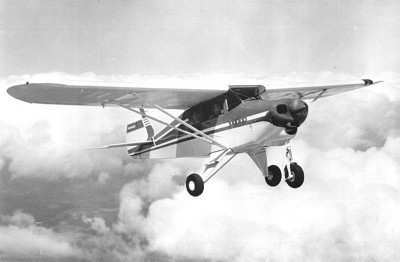Wed, Dec 31, 2014
NTSB Said Carbon Monoxide Detected In Pilot's System, But Not In Sufficient Amount To Cause Incapacitation
The NTSB has released a probable cause report from an accident that occurred October 28, 2013, that resulted in the fatal injury of the pilot of a Piper PA-22-150 Tri-Pacer. Pilot error is cited as the cause of the accident.

According to the report, the pilot was flying his airplane to a hunting location. No one witnessed the departure or accident. A postaccident examination of the accident site indicated that the airplane departed the runway and then impacted the ground in a wooded area about 600 feet from the approximate midpoint of the runway. A postimpact fire occurred. An 8-knot crosswind was recorded about the time of the accident. The loaded weight of the airplane could not be determined due to fire damage. Postaccident examinations of the airplane revealed no mechanical anomalies that would have precluded normal operation. Although the toxicology report showed that the pilot was exposed to carbon monoxide, the level of exposure would only have resulted in a slight headache.
A review of the airplane's maintenance logbooks revealed that the airplane's tires were replaced with larger tires in accordance with a supplemental type certificate the day before the accident. However, the change would have had a small effect on the performance of the airplane. The evidence indicates that the pilot likely lost airplane control during takeoff.
The 51-year old pilot held an FAA private pilot certificate with an airplane single-engine land and instrument ratings. The pilot's most recent third-class FAA medical certificate was issued on April 23, 2013, without any limitations. On the application for that medical certificate, the pilot reported that he had accumulated 625 hours of total flight time and 85 hours in the six months prior to the application. The pilot recorded in his logbook that he had accumulated 719.9 hours of total flight time and 12.8 hours of flight time in the 30 days prior to the accident. The logbook contained a tailwheel endorsement for the pilot dated October 6, 2012. The logbook showed that the pilot's latest flight review endorsement was dated September 12, 2013.
The NTSB determined that the probable cause of this accident as follows was the pilot's loss of airplane control during takeoff.
(Image from file. Not accident airplane)
More News
Aero Linx: International Federation of Airworthiness (IFA) We aim to be the most internationally respected independent authority on the subject of Airworthiness. IFA uniquely combi>[...]
Ultrahigh Frequency (UHF) The frequency band between 300 and 3,000 MHz. The bank of radio frequencies used for military air/ground voice communications. In some instances this may >[...]
A Few Questions AND Answers To Help You Get MORE Out of ANN! 1) I forgot my password. How do I find it? 1) Easy... click here and give us your e-mail address--we'll send it to you >[...]
From 2019 (YouTube Edition): Learning To Paint Without Getting Any On Your Hands PPG's Aerospace Coatings Academy is a tool designed to teach everything one needs to know about all>[...]
Also: Sustainable Aircraft Test Put Aside, More Falcon 9 Ops, Wyoming ANG Rescue, Oreo Cookie Into Orbit Joby Aviation has reason to celebrate, recently completing its first full t>[...]
 ANN's Daily Aero-Linx (05.06.25)
ANN's Daily Aero-Linx (05.06.25) ANN's Daily Aero-Term (05.06.25): Ultrahigh Frequency (UHF)
ANN's Daily Aero-Term (05.06.25): Ultrahigh Frequency (UHF) ANN FAQ: Q&A 101
ANN FAQ: Q&A 101 Classic Aero-TV: Virtual Reality Painting--PPG Leverages Technology for Training
Classic Aero-TV: Virtual Reality Painting--PPG Leverages Technology for Training Airborne 05.02.25: Joby Crewed Milestone, Diamond Club, Canadian Pilot Insurance
Airborne 05.02.25: Joby Crewed Milestone, Diamond Club, Canadian Pilot Insurance



